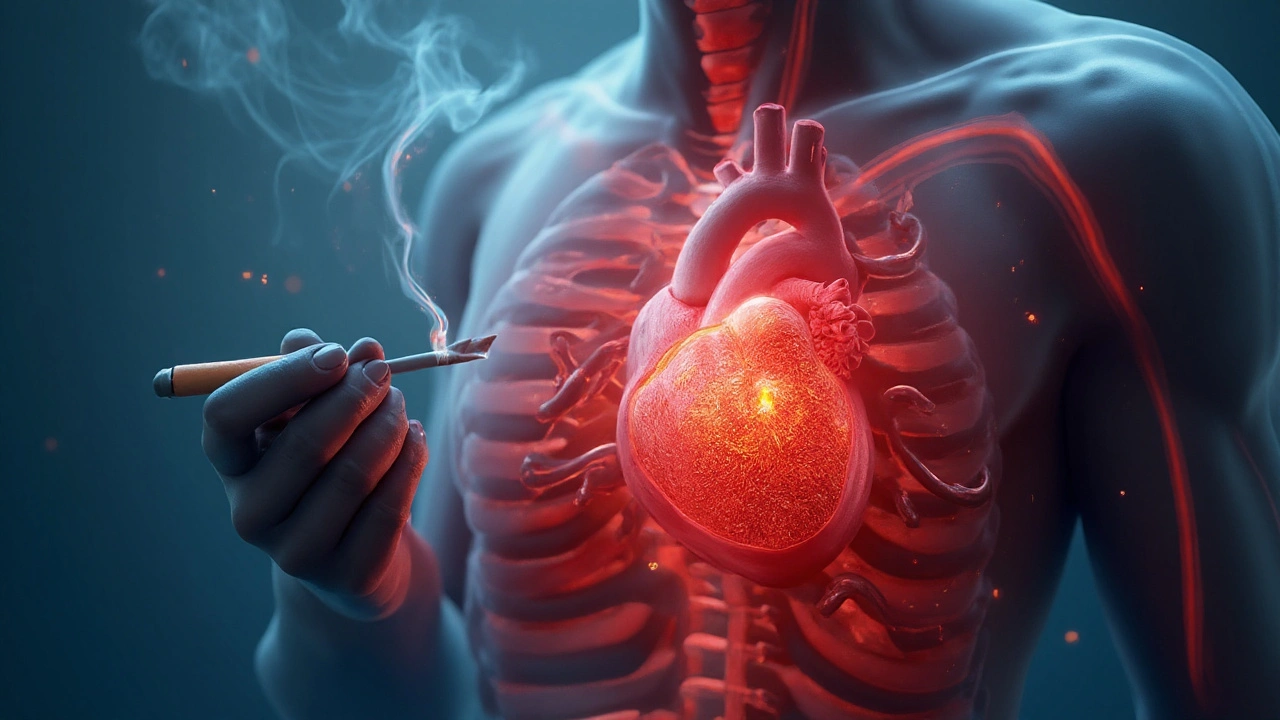If you light up a cigarette, you’re not just hurting your lungs – you’re also attacking the blood vessels that feed your heart. Every puff adds chemicals that make the inner lining of your arteries sticky, narrow, and prone to clots. The result? Your heart has to work harder, and over time that extra strain can turn into coronary artery disease (CAD). The good news is that stopping smoking can reverse many of these changes and dramatically lower your risk.
When you inhale tobacco smoke, you’re breathing in nicotine, carbon monoxide, and hundreds of toxic compounds. Nicotine spikes your heart rate and pushes blood pressure up, while carbon monoxide squeezes the oxygen out of your red blood cells. Those chemicals also cause inflammation, which irritates the artery walls and makes plaque build up faster. Studies show smokers are 2–4 times more likely to develop CAD than non‑smokers, and the risk stays high even after you quit – unless you stay smoke‑free for at least a year.
Chest pain, shortness of breath, and fatigue can be the first clues that your heart isn’t getting enough blood. If you notice these symptoms while walking up stairs or after a light jog, it’s time to talk to a doctor. Don’t assume it’s just ‘smoker’s cough’ or stress; heart problems often show up subtly at first.
Other red flags include sudden dizziness, cold sweats, or a feeling of pressure in the chest that lasts more than a few minutes. If any of these appear, call emergency services right away – fast treatment can save heart muscle.
Even if you feel fine, regular check‑ups are key. A simple blood pressure reading, cholesterol test, and an ECG can catch early damage before you notice any pain.
So, what can you do right now?
Quitting isn’t easy, but every cigarette you avoid adds minutes to your life and improves the quality of those minutes. If you slip, don’t beat yourself up – just get back on track. The longer you stay smoke‑free, the more your arteries heal, and the lower your CAD risk becomes.
Bottom line: smoking is a powerful driver of coronary artery disease, but it’s also one of the easiest risk factors to control. Put out that cigarette, start a simple heart‑healthy routine, and give your heart the chance to stay strong for years to come.

Discover how smoking drives coronary artery disease, the benefits of quitting, and proven strategies to protect your heart.
read more